
The Pentagram partner has a history of making sound design products accessible and fun, and this latest invention is no different.
from It's Nice That https://ift.tt/2Uxsk02

The Pentagram partner has a history of making sound design products accessible and fun, and this latest invention is no different.

Published by Rizzoli, the book brings together a sumptuous selection of photos by artists such as Martin Parr and Diana Markosian, depicting serene swimmers and perfect water.

Sand-coloured walls serve as a backdrop to the linen, cane and teak wood furnishings inside this beachside restaurant and bar near Amsterdam, designed by Anne Claus Interiors.
De Republiek is set along a stretch of beach in Bloemendaal aan Zee, a seaside neighbourhood just an hour's train ride from central Amsterdam.
For the past 17 years, the restaurant and bar was just a temporary pavilion that was erected and dismantled each summer.

Keen to have a year-round space for De Republiek, its owners asked Dutch architect Heiko Hulsker to design and build a permanent beachside structure.
Anne Claus Interiors was brought on board to develop the aesthetic of the internal spaces.

"The architecture of the building with its high ceilings and steel is impressive, but I wanted to create a warm and very welcoming atmosphere," the studio's eponymous founder told Dezeen.
"I decided to create this with all-natural materials and earth-tone colours."

Walls throughout the 600 square-metre room are covered with a bespoke, sand-coloured plaster that's mixed with epoxy resin.
Living room-style seating areas feature oversized sofas upholstered in taupe or ochre-yellow linen. Woven floor rugs, cane armchairs and timber coffee tables have been used as practical decorations.
A more formal dining setting is provided by a series of teak-wood tables, each one accompanied by a rich-brown seating banquette.

Tucked away at the rear of the room is a relaxed lounge area that's centred by a fireplace. It's topped by a chunky flue that's been washed with plaster to blend into the surrounding surfaces.
A bench seat with nutmeg-coloured cushions runs around the periphery of the space.
Beyond the expansive glazed panels that front the restaurant lies an outdoor decking area, where visitors can enjoy their meals with an unspoilt view of the ocean waves.

The prep counter of the restaurant's open kitchen is clad in umber, tan and butterscotch-coloured tiles, while battens of timber overlay the curved drinks bar.
Stacks of paper lanterns, suspended from the ceiling, form dramatic hanging sculptures.
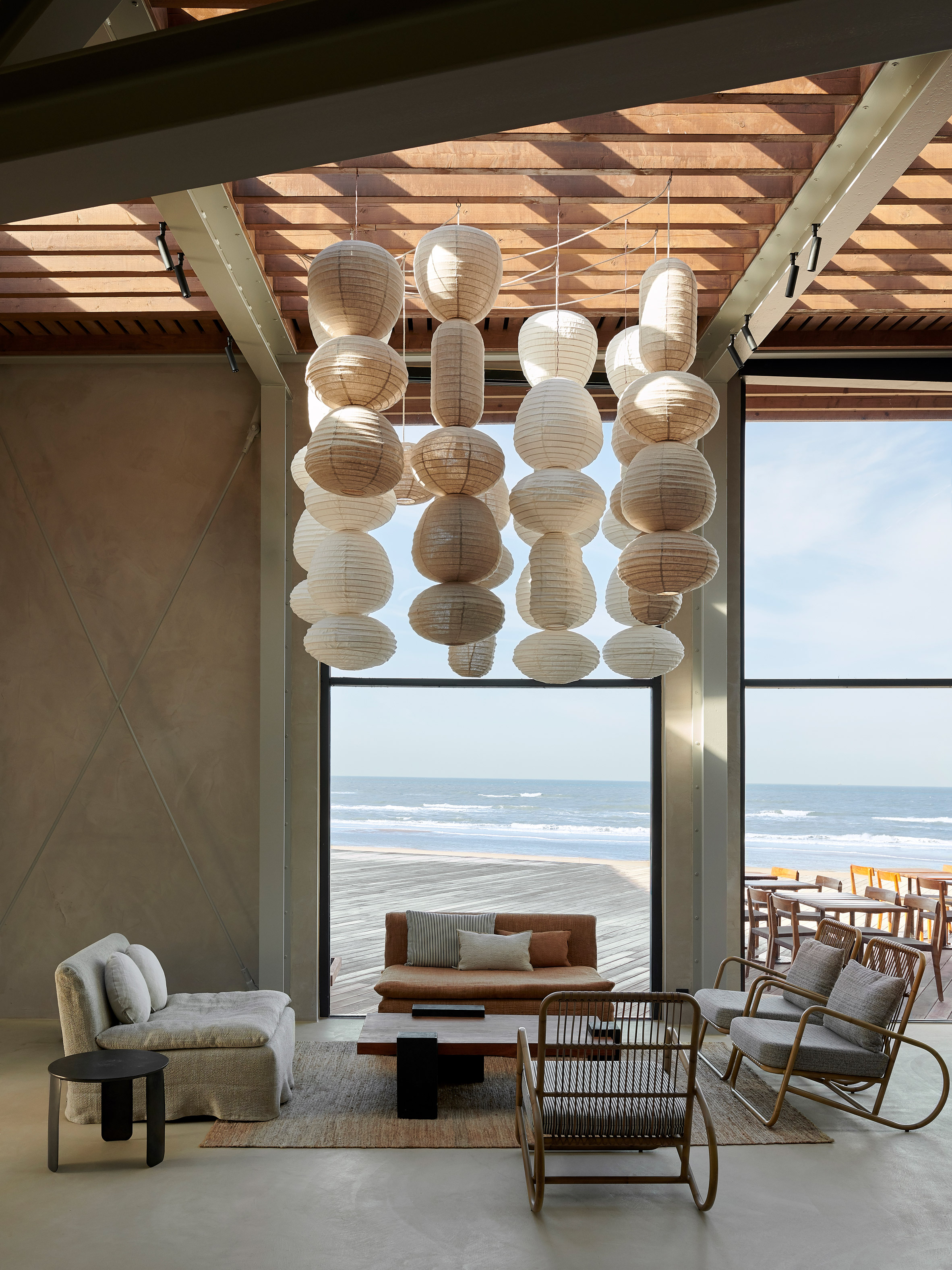
Tall leafy trees that graze the steel beams beneath the roof are dotted throughout the space.
"To play with the high and open space of the pavilion, I wanted to work with hanging elements and elements on the ground," added Claus.

Other projects by Anne Claus Interiors include the playful revamp of a media office in Amsterdam.
The workspace boasts baby-pink walls and features a chunky counter made from candy-coloured slabs of onyx.
The post Anne Claus Interiors uses natural materials and earth-tone colours for beach restaurant De Republiek appeared first on Dezeen.

Japanese designer and sound artist Yuri Suzuki has created a machine that can be used to make and play records.
Created with Japanese publishing and toy company Gakken, the Easy Record Maker has a recording stylus that engraves sounds onto five-inch plastic disks.

"You simply plug in your iPhone, computer, audio player – any sound source – through the mini audio jack to supply sound to record your own record," Suzuki told Dezeen.
"Put the stylus down on the surface, select 33rpm or 45rpm and start making the record."

The compact record maker is designed to engrave five-inch disks, which Suzuki described as having a "nice lo-fi sound".
Suzuki hopes that the Easy Record Maker will help introduce vinyl records to a generation that has never experienced them.

"This idea has been my dream machine since I was teenager," the London-based designer and Pentagram partner said. "With most of the existing media – CD, tape, and mp3 – it is relatively easy to make a copy or create your own original."
"However, as it's a complicated process with records, there is no way to create them at home," he continued. "Of course professional-use record cutting machines exist, but they are very expensive."

As a teenager in a punk band Suzuki wanted to make his own records, but never did as it was too expensive.
"My life time art projects uses records, as I believe that is the only media to physically make sound – through scratching the groove and the stylus then making sound," said Suzuki. "Records can even playback if we lost electricity in the future."

The designer believes the return of the vinyl record is due to both its warm sound and aesthetic qualities, with album artworks looking better on larger-sized record covers.
"I want to re-introduce how nice the record is, the value of having a physical music media and the sound, the listening experience," Suzuki told Dezeen.
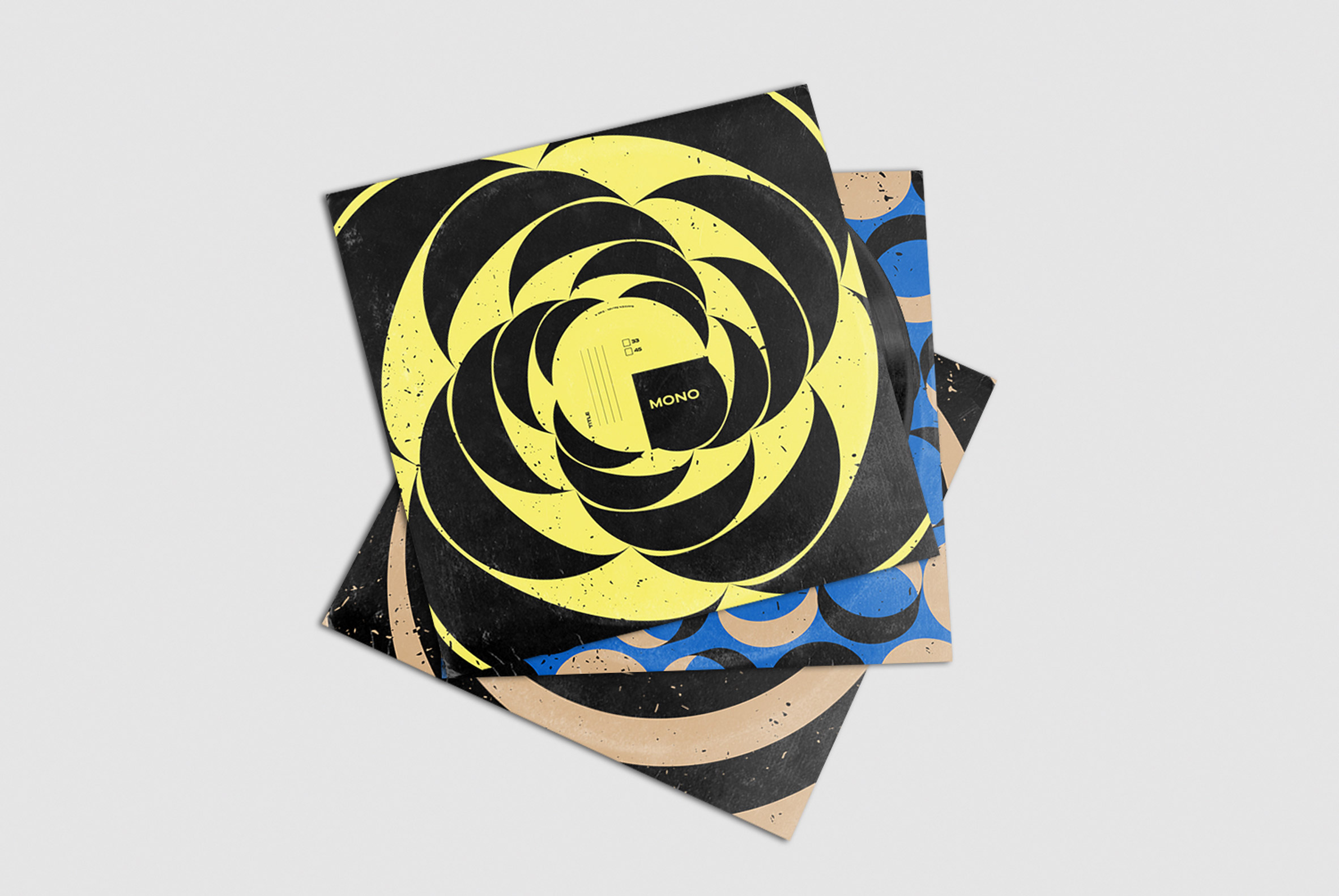
"We are in an extreme time due to the pandemic lockup, but it's easy to call or do an online meeting; we are experiencing alternative ways of communicating," the designer said.
"I hope this device introduces another way to communicate for people – recording your own voice, making a record and sending it to a friend or family via post."
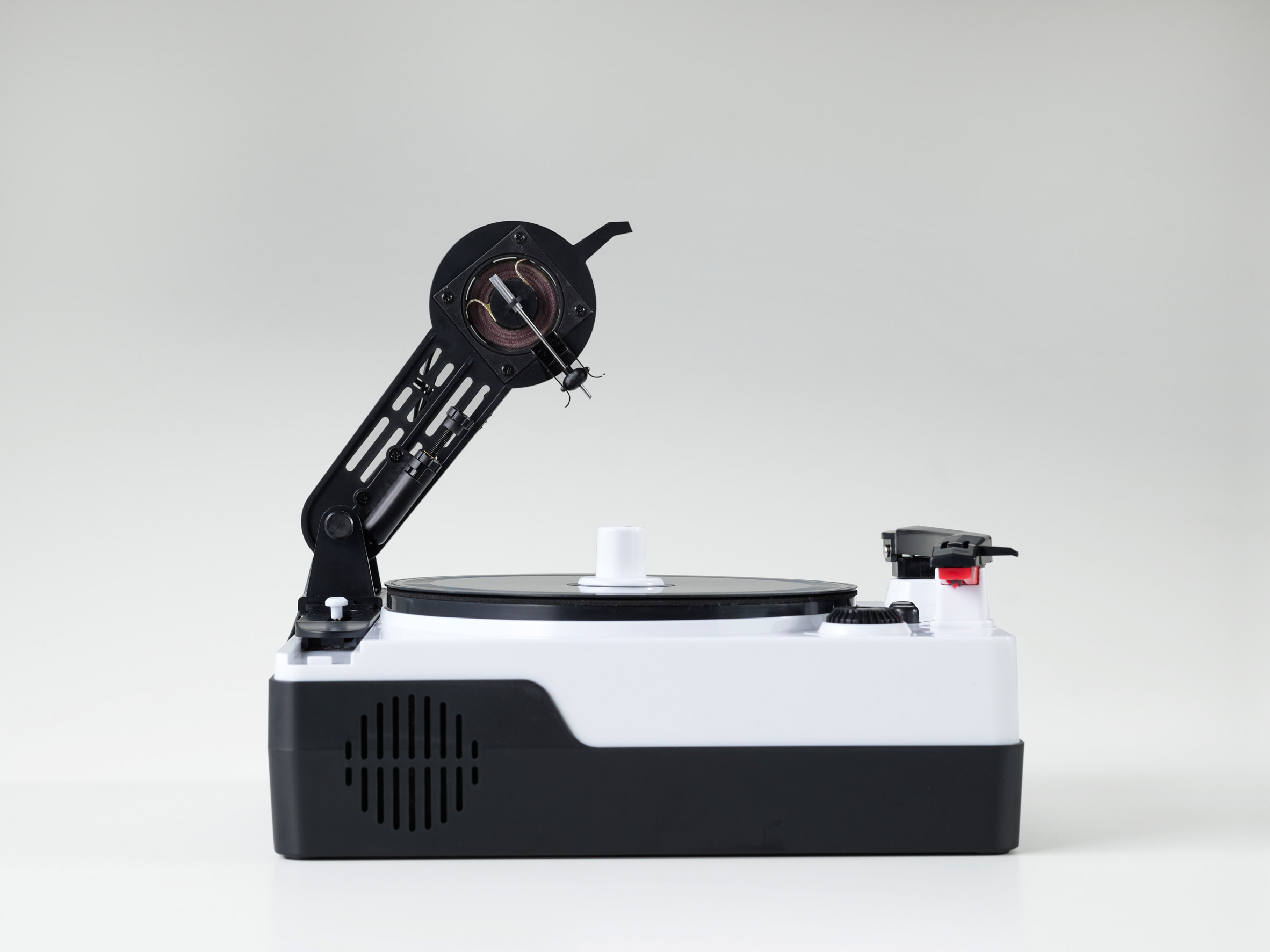
The Easy Record Maker is currently available in Japan and will be available in the UK and US later this year.
Suzuki's previous creations include a re-imagination of a sixty-year-old electronic sequencer and a sonic playground. Suzuki also composed the original music for the Dezeen podcast Face to Face.
The post Yuri Suzuki's Easy Record Maker lets you engrave your own records appeared first on Dezeen.

A visitor centre for the village of Xiahuangyu, China, is formed of interconnected pavilions built around existing pine trees by DnA_Design and Architecture.
Called Pine Pavilion, the project in Songyang County is made of wood, with big glass windows and doors looking out onto the Songyin River.

Pine Pavilion includes a tearoom, shop, toilets, viewing platforms and exhibition areas, alongside a pedestrian and cycle path.
DnA_Design and Architecture described Pine Pavilion as "architectural acupuncture".
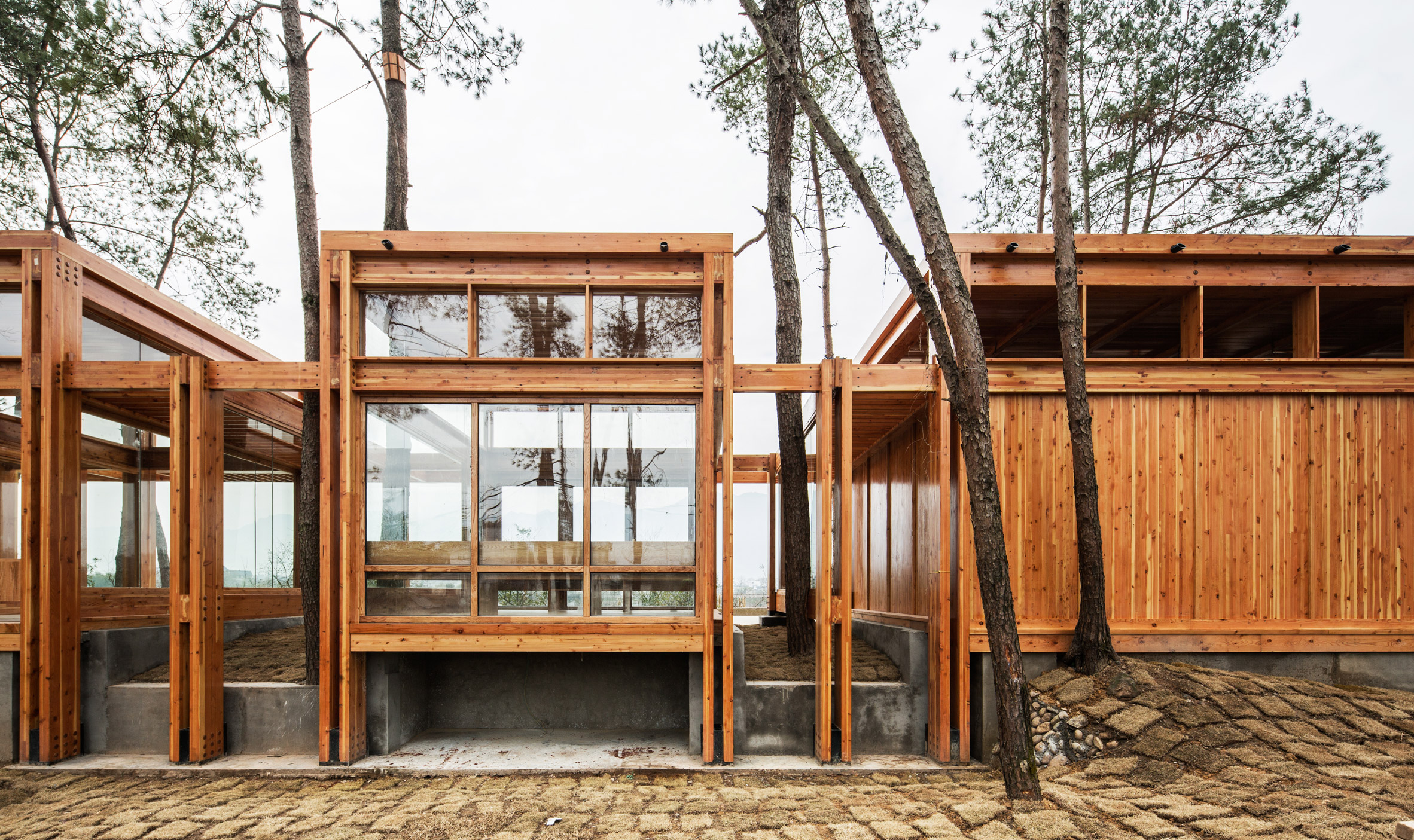
The studio worked alongside the county government to develop a space for the village to encourage in a more sustainable form of tourism.
Located on a narrow strip of land between the river and a fishpond surrounded by pine trees, the pavilion is part of the wider Songyin River Scenic District Development project.

"As a public facility for both the village and tourists, these facilities will introduce the village's heritage and history, inviting tourism as an effective strategy to regenerate the village and increase circulation," said the studio.
"[Pine Pavilion is] a playful art installation introducing the heritage and the context, a large-scale, miniature landscape bonsai of this pine forest."

Sitting atop a concrete base, a sequence of pine frames form a long, thin run of interconnected volumes.
Pine was chosen as a nod to the area's heritage. Songyang County's has a history of pine resin production dating back over a thousand years.

Many of these frames have been infilled with wood or glass, while others have been left open to the elements.
In some of these open areas, existing pine trees have been built around and brought into the structure.
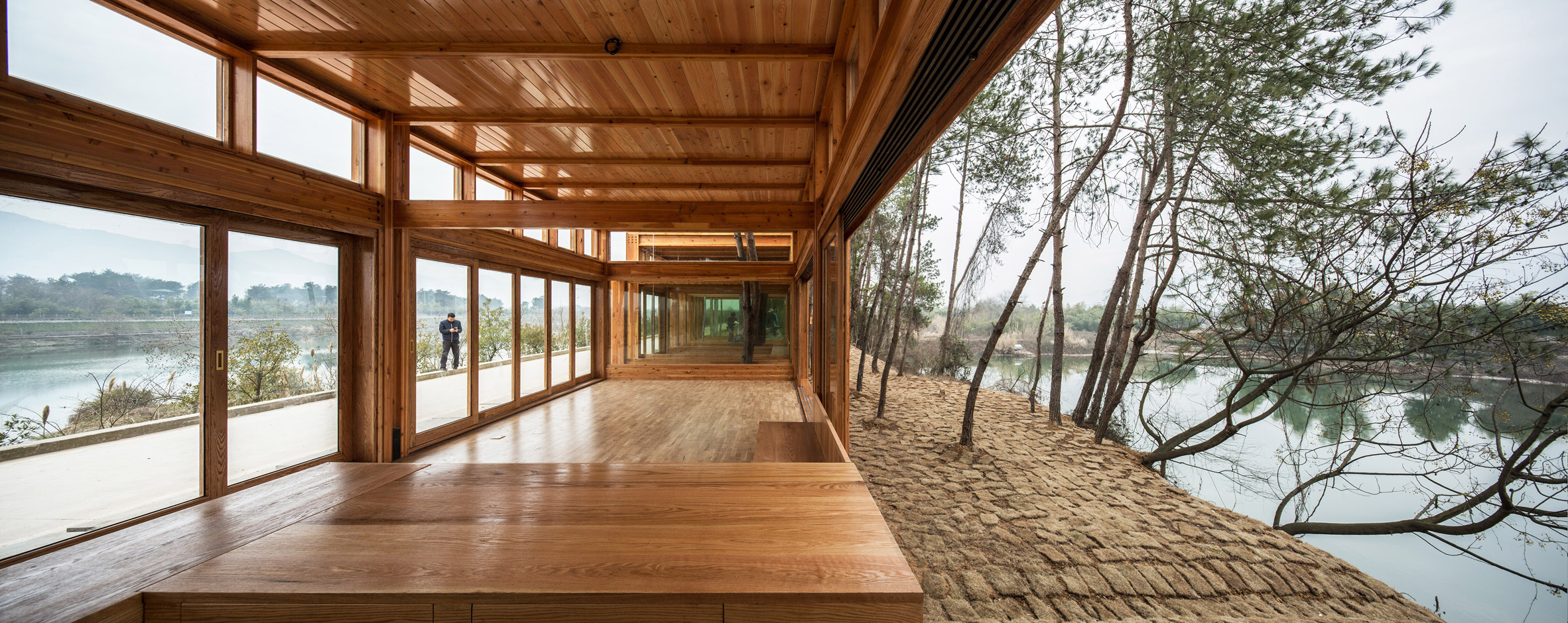
Full-scale, black and white vinyl images on the glass of workers tapping trees overlay views of the real trees.
Cutting through the structure, a series of narrow passages covered by wooden brise soleil create a connection between the riverside path and the fishpond, across which views of the village are visible.

Slightly higher volumes house the more enclosed elements of the programme.
These are topped with clerestory glazing, and can be opened up to the surroundings with sliding glass doors.
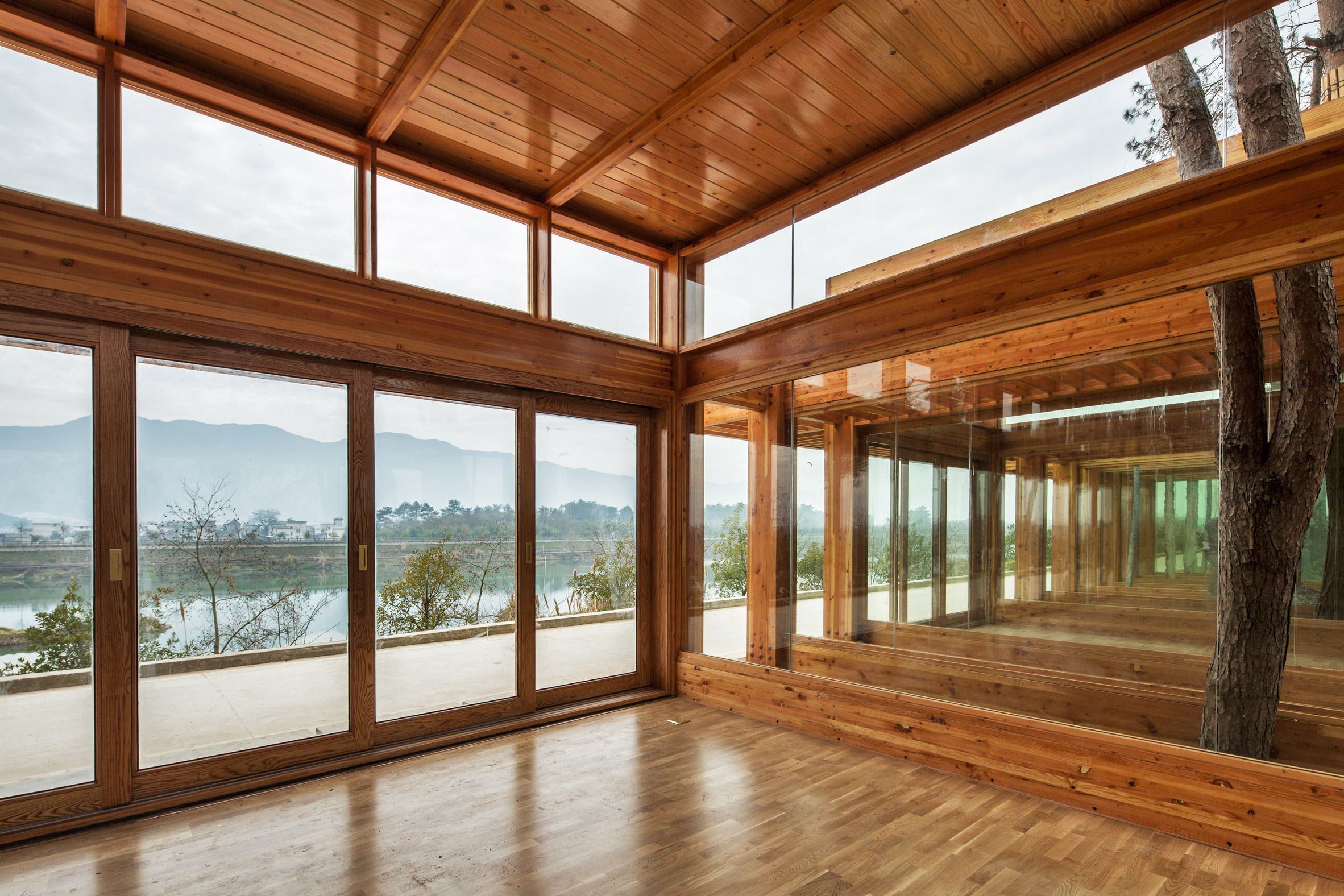
In January, DnA_Design and Architecture presented the Pine Pavilion at The World Around conference in New York, which was livestreamed on Dezeen.
Also in Songyang County, Chinese architect He Wei recently transformed a traditional rammed-earth residence into a youth hostel using a series of polycarbonate-clad rooms on wheels.
Photography is by Wang Ziling.
Project credits:
Architecture design: DnA_Design and Architecture
Principle architect: Xu Tiantian
Design team: Xu Tiantian, Zhang Longxiao, Zhou Yang
The post Riverside visitor centre in China built around existing trees appeared first on Dezeen.